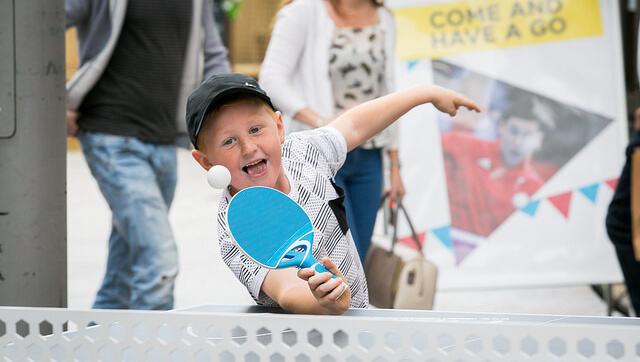KEY INFORMATION
Recommended age group: 11–18
Time required: one 45–60 minute session
Equipment: This Class believes that activity sheets, The Get Set to become a Paralympic Champion presentation or the history of the Paralympic Movement presentation (optional).
ACTIVITY IDEA
Research
So that students can offer informed and considered ideas and opinions, before running the debate use some or all of the introductory ideas below to help them focus on issues and perceptions around disability and to learn basic background information about the Paralympic Movement and Paralympians.
- Have a general discussion with the whole group about what disability means to them: identify and list words and phrases the students first associate with the word 'disability'. What images spring to mind? List their ideas on the board, or ask them to make quick notes and/or sketches.
- Show the Advanced Paralympic Champion assembly slides to the whole class and discuss the achievements of the disabled athletes and other well-known personalities. Can they add any other examples of their own? Has anything they have seen surprised them or changed their views on disability?
- Watch the short film about National Paralympic Day above and ask for the students' feedback – what do they think are the main purposes and highlights? How do they think National Paralympic Day helped to promote wider understanding of disability issues and Paralympic sport?
- Identify and discuss the relevance and impact of the Paralympic Values: equality, determination, courage and inspiration – how could the students apply these to the people and events they have found out about so far?
- This short clip from Stella young's TED talk 'I'm not your inspiration thank you very much' may well provoke some interesting points from the group – has it challenged their perceptions or surprised them in any way?
- Carry out further research about Paralympians, the Paralympic Movement and Mandeville Park, if appropriate, e.g. from http://www.paralympics.org.uk or from the Paralympic Movement resources.
Debate
Set up the formal debate: divide the group into two halves, one side will argue for the motion and the other against. Team members from each side will first prepare and practise their short speeches, the aim is to be as persuasive, accurate and engaging as possible in order to try and 'win' the motion. The activity sheet will support their planning and delivery.
Choose your own topic for debate to focus on and raise the profile of disability issues, or try one of these:
- what's the problem, disabled people are well represented in the media nowadays
- these days, disabled people have the same opportunities as everyone else, right?
- disability is all about being a wheelchair user, isn't it?
- disabled people face many obstacles around equality and inclusion (in our community)
- disability sport has inspired people of all abilities to get active
- the great thing about sport is that anyone can do it
- the use of the word 'inspirational' to describe all disabled people is patronising.
Before beginning the debate establish some ground rules, or ask the students to suggest them, e.g. no interrupting, listening creatively, showing others respect, etc.
Allow time for the students to prepare their arguments and make notes, the speech planner activity sheet will be helpful at this stage. They should practise their speeches and, if possible, deliver them without notes.
- Allow 5-10 minutes for each side to present their arguments.
- Invite each team to ask the other team questions and to challenge some of their points.
- Have a summing up session to establish the key points from both sides of the motion.
Class vote
Take a free ballot where individuals vote for or against the motion based on the strength of the arguments made. Encourage an open-minded approach, where it is perfectly acceptable for individuals to change their view if someone has made a particularly persuasive point, even if they are on the other side! How many of them have changed their view during the debate?
Write a final sentence to display for others to read, e.g. 'This class believes that disability sport has inspired people of all abilities to get active' or 'This class does not believe that disabled people are well represented in the media'.
Differentiation
- Younger/less able or less confident students may feel more confident about talking and offering an opinion in smaller groups, say five or six speakers arguing for and against the motion, rather than half the class. They may also need more time to research and note down their views and will find the guidance on the activity sheet particularly helpful.
- Older/more able and confident students can carry out further independent, in-depth research into disability issues before the debate begins and then make an active contribution to the full-class debate largely without notes.
Extension
- The arguments and debates could be honed and re-run – this time in front of a camera – to make a documentary or recorded as an audio file. You could invite parents and community members in to watch or take part – perhaps by facilitating an 'any questions?' session at the end.
- Build on your debate to challenge students to use their research to create their own news stories as 'citizen journalists' using the Paralympic plots resource.
- A team of 'citizen journalists' could write or record a story about the debate and post it to the school website or newsletter and upload it, with images, to the Get Set website for a chance to win Get Set goodies!
- Watch the full version of Stella Young's TED talk, 'I'm not your inspiration thank you very much'.

